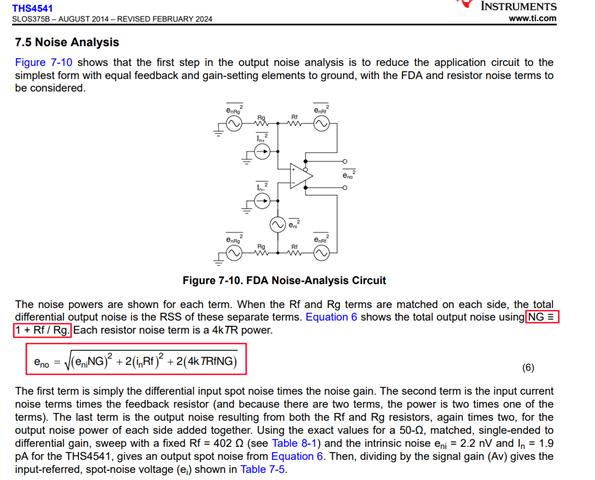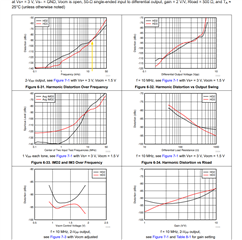Tool/software:







This thread has been locked.
If you have a related question, please click the "Ask a related question" button in the top right corner. The newly created question will be automatically linked to this question.
Tool/software:







Hello Ting,
I am traveling for work today/tomorrow, so I can look into supporting your analysis and provide feedback later this week.
In the interim, you can view this document on analyzing noise in high-speed amplifiers: Noise Analysis for High Speed Op Amps
Best,
Alec
okk,I'll wait for you to come back and talk about these issues together, and by the way, whether it's Figure 1 or Figure 2, I've removed the load resistor R160, otherwise I won't be able to receive the correct signal at the output, and the 500 ohm load that this datasheet repeatedly mentions seems to limit the use
Hello Ting,
Firstly I can answer your question regarding the THS4541 Bessel filter:

Secondly, the 2.2nV/sqrt(Hz) noise specification is the input-referred noise. This noise value is affected by the noise gain of the system, as well as the input-referred current noise and voltage noise. Larger resistor values can also contribute their own Nyquist Thermal Noise. The equations you have highlighted in RED and the attached noise analysis file do properly describe the process for calculating output noise.
I can provide an example calculation, but it may be more beneficial to take your measured output noise and work backwards using the known values of e_ni and i_n.
If we assume correct operation of the FDA and that the datasheet noise values are correct for this measurement, the resulting math does not add up. The Rf value is either on a magnitude of 10^11, or the temperature is hotter than the device is rated for.
I would ask you to again revisit your noise measurement; I do not think the measurement is accurately capturing the THS4541 noise; the values are too high for the selected resistor values, noise gain, and temperature (I assumed 25C / room temp).
Best,
Alec


Hello Ting,
Thank you for the response. I have been on travel for a few days, so I will take time to read and respond soon.
Thank you!
Best,
Alec